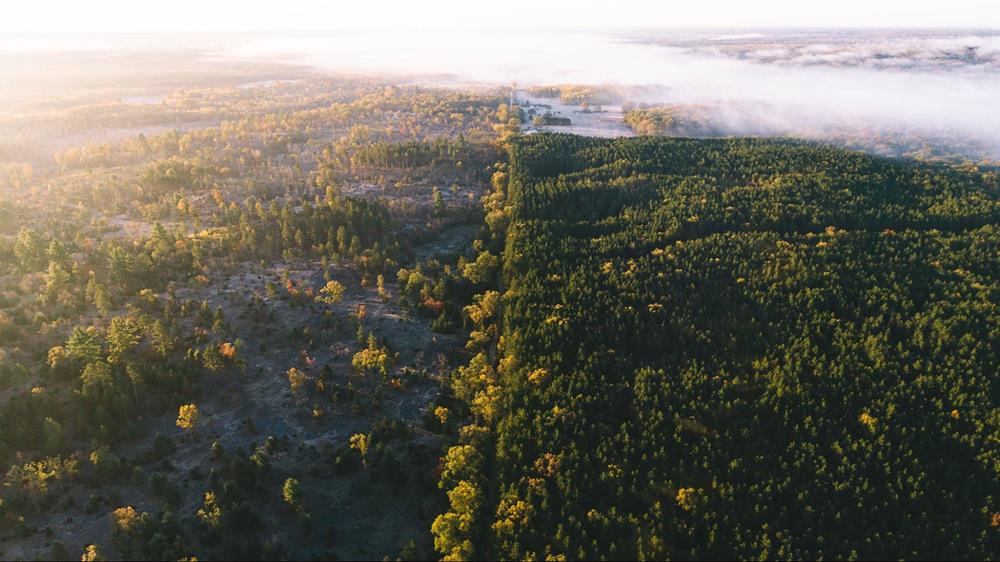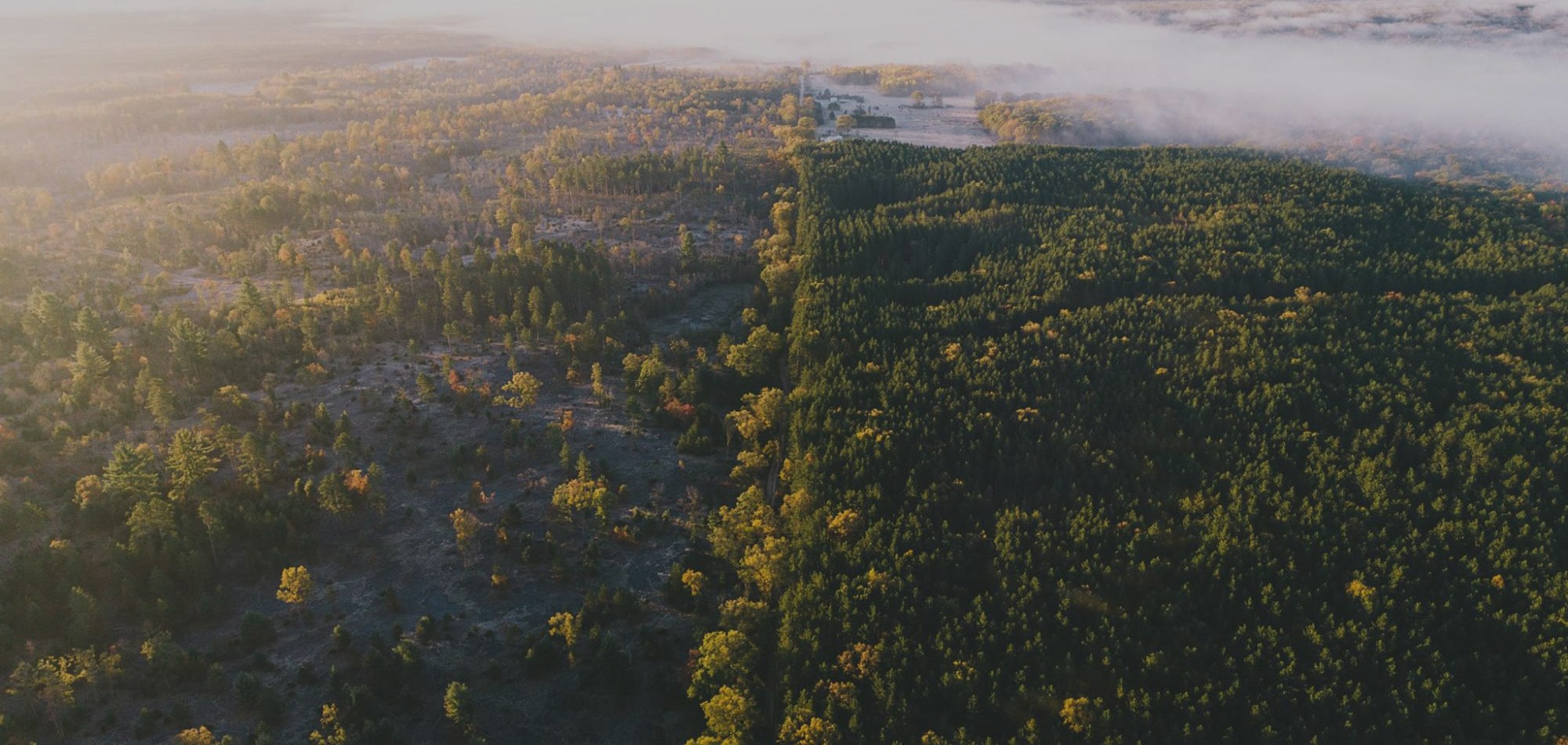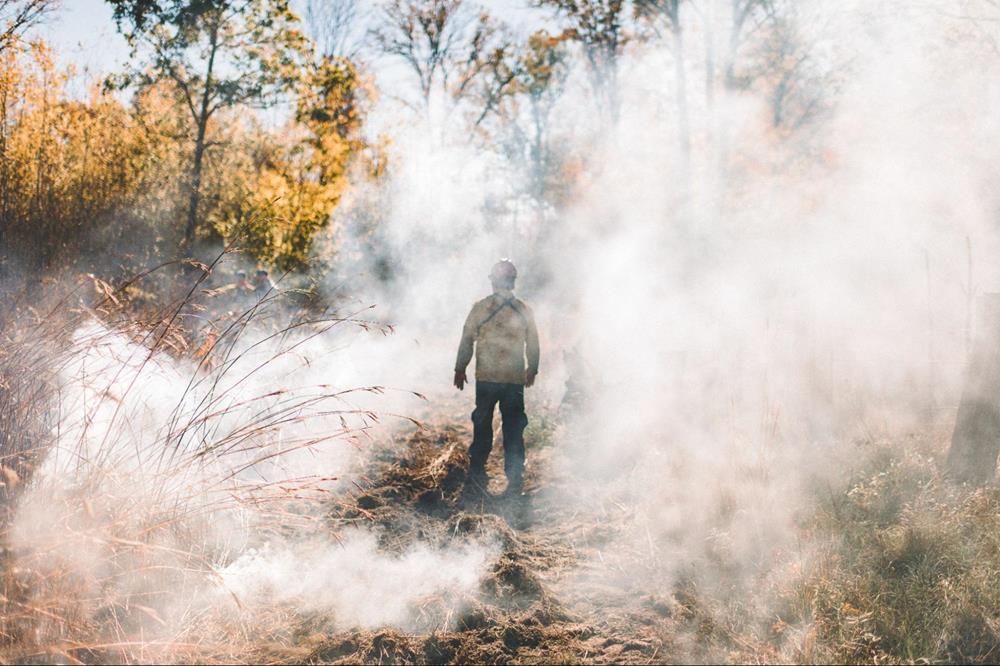 Centuries ago, regularly occurring natural wildfires and cultural burning by Native Americans made oak savannas into one of the most dominant landscape types on the North American continent, and one that provided vital habitat to hundreds of wildlife species. Over the last few hundred years, though, the majority of these savanna ecosystems have been lost. A recent SITKA Ecosystem Grant with the National Wild Turkey Federation aims to help restore some of this important landscape.
Centuries ago, regularly occurring natural wildfires and cultural burning by Native Americans made oak savannas into one of the most dominant landscape types on the North American continent, and one that provided vital habitat to hundreds of wildlife species. Over the last few hundred years, though, the majority of these savanna ecosystems have been lost. A recent SITKA Ecosystem Grant with the National Wild Turkey Federation aims to help restore some of this important landscape.
 These savannas, blending shade and sun, and full of native grasses and wildflowers, provided ideal conditions for species ranging from whitetail deer, to reptiles to pollinators like bumblebees and butterflies. And they provided habitat for wild turkeys. Many years of human development, fragmentation, natural succession and the suppression of those naturally occurring wildfires, though, have wiped out much of this vital habitat.
These savannas, blending shade and sun, and full of native grasses and wildflowers, provided ideal conditions for species ranging from whitetail deer, to reptiles to pollinators like bumblebees and butterflies. And they provided habitat for wild turkeys. Many years of human development, fragmentation, natural succession and the suppression of those naturally occurring wildfires, though, have wiped out much of this vital habitat.
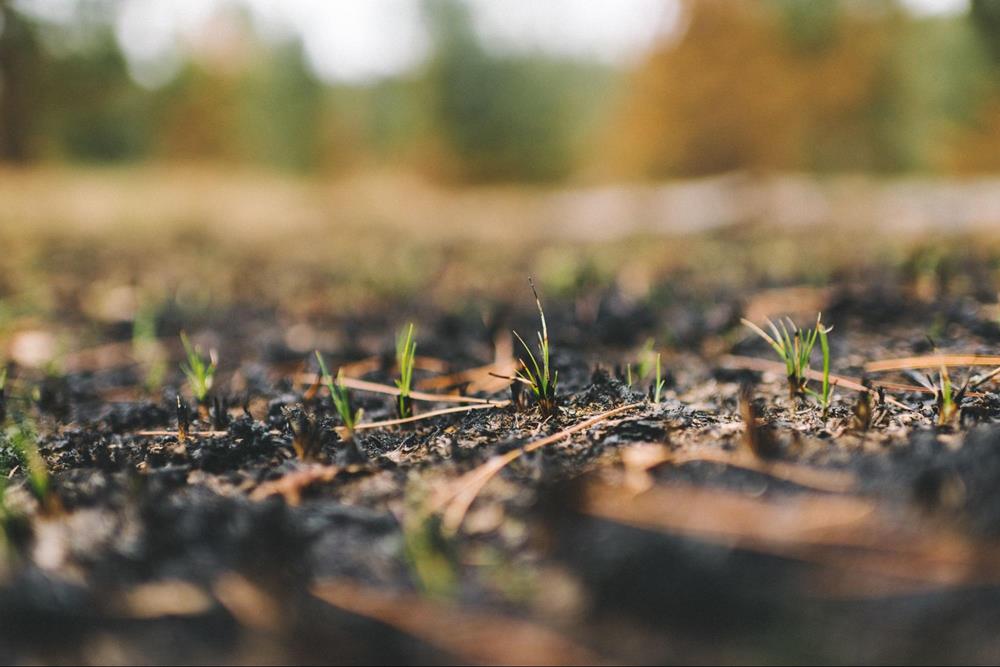 Oak savannas represented a perfect balance—between forest and grassland. Regularly occurring fire largely kept succession in check, meaning that the burning of understory kept the creeping pine and hardwood forests from encroaching too far into the savanna ecosystem. The regularity of these burns prevented each individual fire from becoming particularly intense, meaning that the mature oaks could survive and thrive, thus keeping these oak savanna ecosystems in perfect balance.
Oak savannas represented a perfect balance—between forest and grassland. Regularly occurring fire largely kept succession in check, meaning that the burning of understory kept the creeping pine and hardwood forests from encroaching too far into the savanna ecosystem. The regularity of these burns prevented each individual fire from becoming particularly intense, meaning that the mature oaks could survive and thrive, thus keeping these oak savanna ecosystems in perfect balance.
 “Oak savannas are quite simply put a transitional habitat,” says Ryan Boyer, District Biologist for the National Wild Turkey Federation. “They were historically found where we had large expansive grasslands that were slowly transitioning into more forested areas. That created a really unique ecosystem type with open canopy allowing sunlight to hit the ground, allowing for understory vegetation which is so beneficial for a whole suite of wildlife species from invertebrates, to reptiles, to birds, to small and large mammals.”
“Oak savannas are quite simply put a transitional habitat,” says Ryan Boyer, District Biologist for the National Wild Turkey Federation. “They were historically found where we had large expansive grasslands that were slowly transitioning into more forested areas. That created a really unique ecosystem type with open canopy allowing sunlight to hit the ground, allowing for understory vegetation which is so beneficial for a whole suite of wildlife species from invertebrates, to reptiles, to birds, to small and large mammals.”
A SITKA Ecosystem Grant is helping Boyer and others restore some of this oak savanna habitat in the Baldwin White Cloud Ranger District of Michigan’s Huron Manistee National Forest, to the benefit of wild turkey and myriad other species, as well as to the people that hunt and recreate in these areas.
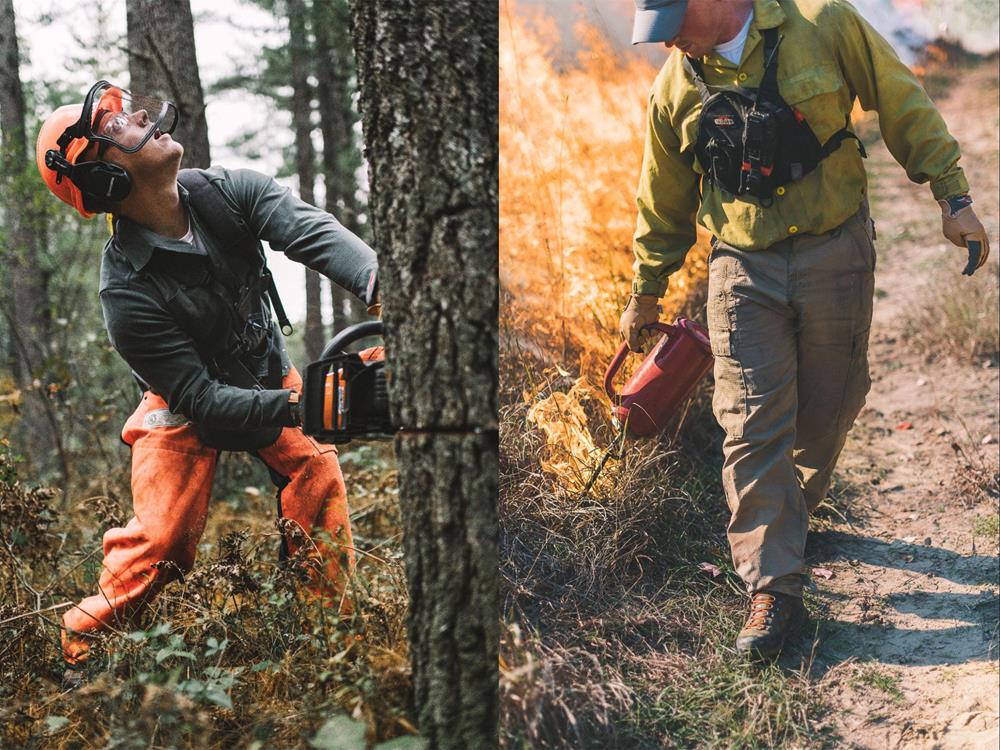 These projects begin with the selective cutting of trees in particularly dense areas. Timber sales conducted by the U.S. Forest Service bring in further funding that goes directly back to the land on which the trees were cut. Next comes prescribed fire from Boyer’s team to remove some of the less desirable woody species and to set back some of the grasses to allow for the growth of forbs, aka native wildflowers. Sometimes manual reseeding helps stimulate that growth.
These projects begin with the selective cutting of trees in particularly dense areas. Timber sales conducted by the U.S. Forest Service bring in further funding that goes directly back to the land on which the trees were cut. Next comes prescribed fire from Boyer’s team to remove some of the less desirable woody species and to set back some of the grasses to allow for the growth of forbs, aka native wildflowers. Sometimes manual reseeding helps stimulate that growth.
For Boyer and others, it doesn’t take long to see the benefits of this work.
“In some instances you’ll see birds respond almost immediately when you still have organic matter smoldering,” Boyer says.
As wildflowers begin popping up in the months following a burn, the birds respond even more favorably, and they continue to use those sites year after year. The reason for this is that forbs attract pollinators and other insects. Wild turkeys, especially females, rely heavily on these insects as part of their diet, especially coming out of winter and into breeding season. Nutritious, calcium-rich insects like caterpillars are especially important for egg development. Post-hatch, these insects are vital to a successful nest, as they make up upwards of 90% of the protein-heavy diet of young poults. Caterpillars are also a critical food source for many songbird species.
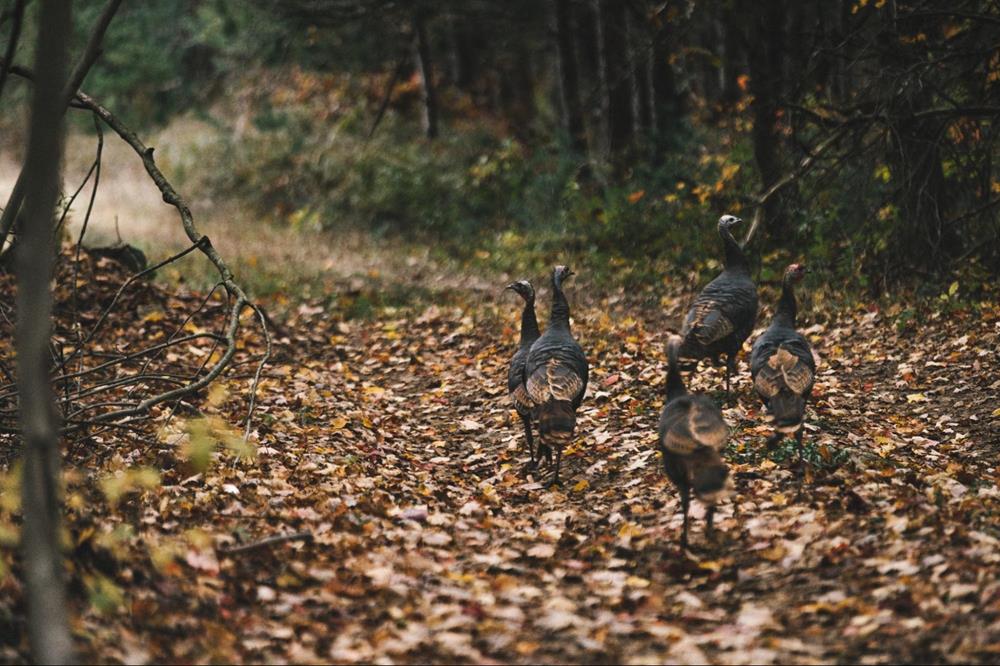 Among the other species benefiting from these stewardship efforts is the endangered Karner blue butterfly, which relies heavily on wild lupine that grows in oak savanna ecosystems. The threatened eastern massasauga rattlesnake and many other species struggling due to lack of adequate habitat also benefit from these restoration projects. In fact, savannas and prairies across Michigan are home to more rare and declining species than any other upland habitat type found throughout the state.
Among the other species benefiting from these stewardship efforts is the endangered Karner blue butterfly, which relies heavily on wild lupine that grows in oak savanna ecosystems. The threatened eastern massasauga rattlesnake and many other species struggling due to lack of adequate habitat also benefit from these restoration projects. In fact, savannas and prairies across Michigan are home to more rare and declining species than any other upland habitat type found throughout the state.
“I’ve come across black bears on these project sites and more whitetail deer than I can count,” Boyer says. “I’ve run into deer hunters on these sites, and when they see the wildflowers come back up they assume it’s a food plot we’ve put on it. In essence, they’re absolutely right. These are native wildflowers and native grasses that provide really high calorie levels and nutritional value that far and above exceeds anything that we could put in as a food plot variety.”
Most of this work is happening on public land that’s utilized by hunters and recreationalists, and some is taking place in partnership with private land owners whose property is adjacent to public land. The prescribed burning taking place in these photographs is on a corridor of public land connecting two previous oak savanna restoration projects. The goal is to reduce the amount of fragmentation of these savanna ecosystems and to create continuous tracts of habitat. The more contiguous oak savanna throughout Michigan and other Midwestern states, the more these wild turkeys and other species can move freely to seek out diverse food sources, shelter and other needs.
With more contiguous oak savanna, too, the landscape more closely resembles that of North America before European settlement. Back then, fire allowed life to thrive—wildflowers, insects, wild turkeys and much more.
